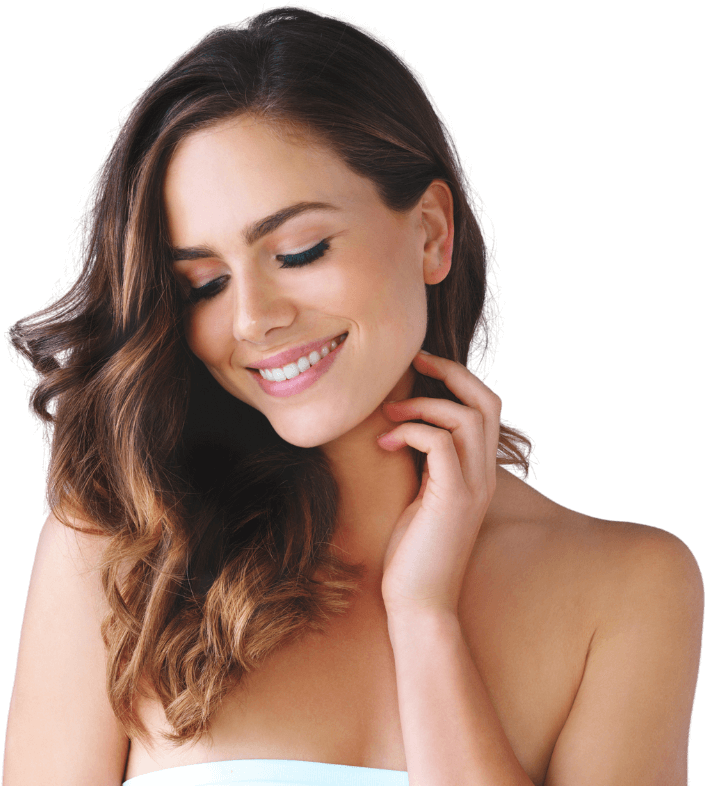Understanding Sculptra vs. Botox: Which Injectable Treatment Works Best?

Table of Contents
- What is Sculptra?
- What is Botox?
- How Sculptra Works
- How Botox Works
- Treatment Areas
- Results Timeline
- Cost Comparison
- Side Effects and Safety
- Who is the Best Candidate?
- Combining Treatments
- Making Your Choice
- Frequently Asked Questions
When you want to look younger and feel more confident, two popular treatments come up again and again: Sculptra and Botox. Both can help you achieve a more youthful appearance, but they work in very different ways.
Many people wonder which treatment will give them the best results. The answer depends on your goals, skin type, and what areas you want to improve. Let’s break down everything you need to know about these two anti-aging treatments.
What is Sculptra?
Sculptra is an injectable treatment that helps restore lost facial volume. Unlike other dermal fillers that use hyaluronic acid, Sculptra contains poly-L-lactic acid (PLLA). This special ingredient works with your body to boost natural collagen production.
The FDA approved Sculptra for cosmetic use in 2009. Since then, millions of people have used this treatment to address age-related volume loss. Sculptra works best for people who want gradual, natural-looking results.
This treatment goes deeper than the skin’s surface. It targets the underlying structure that supports your face. As we age, we lose collagen and fat in our faces. Sculptra helps replace what time has taken away.
What is Botox?
Botox is a purified protein that temporarily relaxes facial muscles. When injected into specific muscles, it reduces the appearance of dynamic wrinkles. These are the lines that form when you make facial expressions.
The FDA first approved Botox for cosmetic use in 2002. Today, it’s the most popular non-surgical cosmetic treatment in the world. More than 7 million people receive Botox injections each year.
Botox works on expression lines like crow’s feet, forehead wrinkles, and frown lines between the eyebrows. It prevents muscles from contracting, which stops new wrinkles from forming and softens existing ones.
How Sculptra Works
Sculptra stimulates your body’s natural collagen production process. When injected, the poly-L-lactic acid particles create a framework under your skin. Your body recognizes these particles and begins producing new collagen around them.
This process takes time. You won’t see immediate results like you would with traditional fillers. Instead, your skin gradually becomes thicker and more youthful over several months.
The collagen production continues for about two years after your last treatment. This means Sculptra results can last much longer than other injectable treatments. Most people need 2-3 sessions spaced about 6 weeks apart.
Your body eventually absorbs the Sculptra particles, but the new collagen remains. This creates long-lasting volume restoration that looks completely natural.
How Botox Works
Botox blocks nerve signals to specific facial muscles. When these signals are blocked, the muscles can’t contract as strongly. This prevents the skin from folding and creating wrinkles.
The treatment takes effect within 3-5 days after injection. You’ll see the full results after about two weeks. The muscle relaxation lasts for 3-4 months before the effects gradually wear off.
Regular Botox treatments can actually prevent new wrinkles from forming. When muscles stay relaxed, they can’t create the repeated motions that cause permanent lines in your skin.
Treatment Areas
Sculptra Treatment Areas
- Cheeks and mid-face volume loss
- Temple hollowing
- Jawline definition
- Nasolabial folds (smile lines)
- Overall facial volume restoration
Botox Treatment Areas
- Forehead lines
- Crow’s feet around the eyes
- Frown lines between eyebrows
- Bunny lines on the nose
- Lip lines
- Neck bands
The two treatments target completely different aging concerns. Sculptra addresses volume loss and skin quality. Botox focuses on muscle movement and expression lines.
Results Timeline
Sculptra Timeline
- Week 1-2: Minimal visible changes
- Month 2: Gradual improvement begins
- Month 3-4: Noticeable volume restoration
- Month 6: Full results visible
- Years 1-2: Results continue to improve
Botox Timeline
- Day 3-5: Effects begin to show
- Week 2: Full results visible
- Month 3-4: Effects start to fade
- Month 4-6: Repeat treatment needed
Sculptra offers longer-lasting results but requires patience. Botox provides quick results but needs more frequent touch-ups.
Cost Comparison
Sculptra typically costs more upfront because you need multiple vials per session. However, the long-lasting results can make it more cost-effective over time. Most people spend $1,500-$2,500 per Sculptra session.
Botox costs less per session, usually $300-$800 depending on the treatment area. But you’ll need treatments every 3-4 months to maintain your results. This adds up to $1,200-$3,200 per year.
When you calculate the cost per year, Sculptra often provides better value. The exact price depends on how much product you need and your provider’s pricing structure.
Side Effects and Safety
Sculptra Side Effects
- Swelling at injection sites
- Bruising
- Redness
- Tenderness
- Small bumps under the skin (rare)
Botox Side Effects
- Temporary bruising
- Headache
- Droopy eyelids (rare)
- Flu-like symptoms
- Injection site pain
Both treatments have excellent safety records when performed by qualified providers. Serious side effects are rare with either option.
The key to safe treatment is choosing an experienced injector. They should understand facial anatomy and use proper injection techniques.
Who is the Best Candidate?
Good Sculptra Candidates
- People with facial volume loss
- Those wanting gradual, natural results
- Patients who can wait for results to develop
- Anyone seeking long-term solutions
Good Botox Candidates
- People with expression lines
- Those wanting quick results
- Patients with active facial muscle movement
- Anyone seeking wrinkle prevention
Age isn’t the only factor. Some younger people benefit from Botox for prevention, while older patients might need Sculptra for volume restoration.
Your skin type, lifestyle, and goals all play a role in determining the best treatment. A consultation with an experienced provider can help you decide.
Combining Treatments
Many people get the best results by combining Sculptra and Botox. This approach addresses both volume loss and expression lines for complete facial rejuvenation.
The treatments complement each other well. Sculptra restores the foundation of your face, while Botox smooths surface wrinkles. Together, they can take years off your appearance.
Your provider might recommend starting with one treatment and adding the other later. This staged approach lets you see how your skin responds and adjust your treatment plan.
Making Your Choice
Consider these factors when choosing between Sculptra and Botox:
Choose Sculptra if you have:
- Sagging skin
- Hollow cheeks
- Lost facial volume
- Time to wait for gradual results
Choose Botox if you have:
- Forehead wrinkles
- Crow’s feet
- Frown lines
- Want quick results
Many people benefit from both treatments at different times. Your aesthetic goals and current aging concerns should guide your decision.
A skilled provider can assess your face and recommend the best approach. They might suggest one treatment now and another later as your needs change.
Professional Consultation
Before making any decision, schedule a consultation with a qualified provider. They can examine your face, discuss your goals, and create a personalized treatment plan.
During your consultation, ask about:
- Which treatment best addresses your concerns
- Expected results and timeline
- Number of sessions needed
- Total cost investment
- Aftercare requirements
Look for providers with extensive experience in both treatments. They should show you before-and-after photos and explain the pros and cons of each option.
Frequently Asked Questions
1. How long do Sculptra results last compared to Botox?
Sculptra results can last 2+ years, while Botox typically lasts 3-4 months. However, the treatments address different concerns, so the longevity comparison isn’t always relevant to your specific needs.
2. Can I get Sculptra and Botox on the same day?
Yes, many providers offer combination treatments. The injections target different areas and work through different mechanisms, so there’s no conflict between them.
3. Which treatment hurts more?
Both treatments cause minimal discomfort. Sculptra injections go deeper, so you might feel more pressure. Botox uses very fine needles and is often described as feeling like tiny pinpricks.
4. How many Sculptra sessions will I need?
Most people need 2-3 Sculptra sessions spaced 6-8 weeks apart. Your provider will assess your volume loss and recommend the right number of treatments during your consultation.
5. Will people notice I had treatment?
Both treatments provide natural-looking results when performed correctly. Sculptra changes develop gradually, so people usually notice you look refreshed rather than “done.”
6. Are there any activities I should avoid after treatment?
After Sculptra, avoid intense exercise for 24 hours and massage the treated areas as directed. After Botox, avoid lying down for 4 hours and don’t exercise for 24 hours.
7. How do I choose between the two treatments?
The best choice depends on your specific aging concerns. Sculptra works best for volume loss, while Botox targets expression lines. Many people benefit from both treatments.
8. When will I see results from each treatment?
Botox results appear within 3-5 days and peak at 2 weeks. Sculptra results develop gradually over 2-6 months as your body produces new collagen.

Not Sure Which Procedure Is Right for You?
Schedule a consultation with our expert providers to discuss your aesthetic needs.
